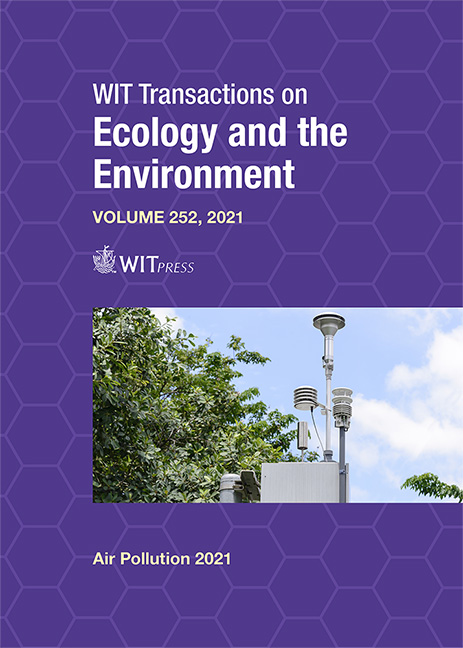HOW EFFECTIVE ARE NATURE-BASED SOLUTIONS IN DIFFERENT ENVIRONMENTS?
Price
Free (open access)
Transaction
Volume
252
Pages
12
Page Range
3 - 14
Published
2021
Paper DOI
10.2495/AIR210011
Copyright
Author(s)
ANA ASCENSO, CARLA GAMA, PETER ROEBELING, ANA ISABEL MIRANDA
Abstract
Air pollution is a major global concern in urban areas and it is considered the greatest environmental risk to health. Nature-based solutions (NBS) can help improve air quality and reduce the urban heat island effect. The impacts of urban vegetation on air quality and ambient temperature depend on many factors, such as vegetation type, location, pollutants, climate conditions and topography. Therefore, the implementation of NBS needs to be tailored for each city. Within the context of the H2020 UNaLab project, the main objective of this work is to assess the potential of NBS to improve air quality across three European cities with different climates: (i) Eindhoven, The Netherlands; (ii) Tampere, Finland; and (iii) Genova, Italy. The WRF-CHEM model was applied for the hottest week in a present climate reference year. The baseline case (without NBS) and two NBS scenarios were simulated for each city. These scenarios (green roofs and green parks) were implemented in the model by modifying the land-use type and the emissions of the model grid cells. According to the model results, the city that least benefited from NBS was Tampere with an average reduction of 5% in surface temperature, and 1% in nitrogen dioxide (NO2) and ozone (O3) concentrations. Temperature-wise Genova and Eindhoven had similar results, approximately 6% reduction, while Genova showed the largest improvement in No2 (12%). These results indicate that NBS are more effective in high temperature and high air pollution cities, such as Genova. Moreover, this study reinforces the importance of studying case-specific solutions, considering environmental characteristics and challenges.
Keywords
air quality, temperature, green roofs, green parks, modelling, urban areas





